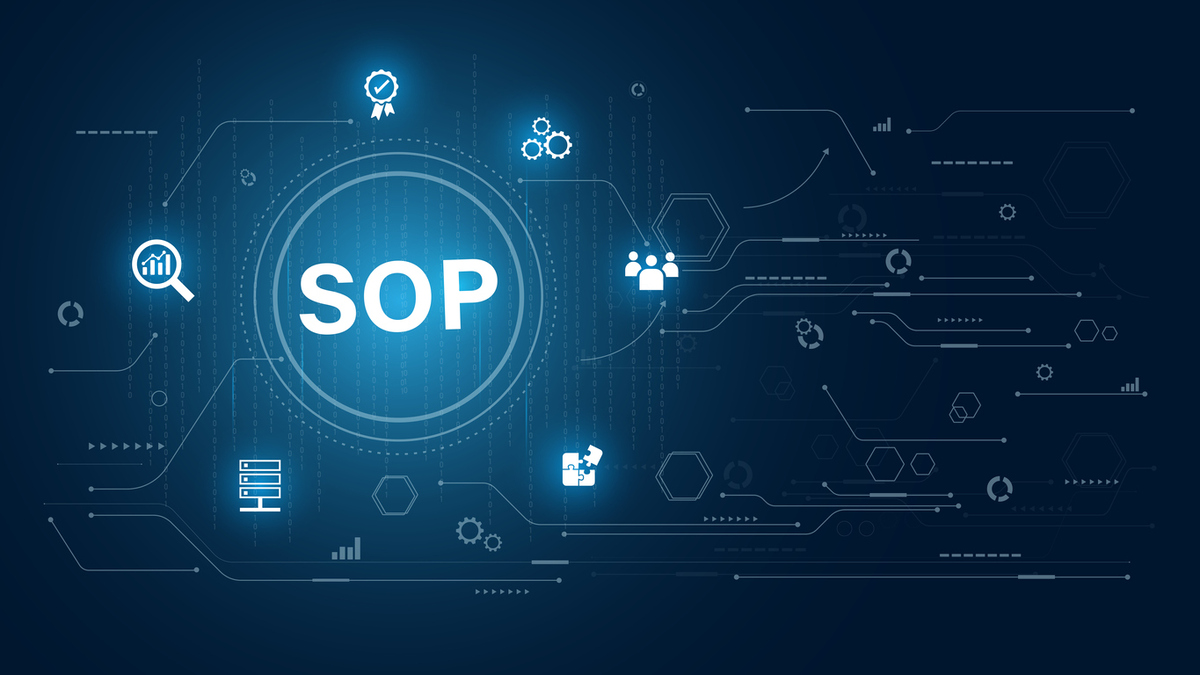SOP – the springboard to automation
How the standardisation of workflows can ease HR’s increasing workload

Digital transformation projects fail to meet the expectations of many organisations – if they don’t fail, full stop. Experts often point out that deploying digital technologies in an inefficient, outdated organisational structure will only result in a business that operates in the same old, inefficient way –the inefficiency will just be faster.
To bring an analogy from agriculture, no matter how genetically advanced the seeds are, without cultivating the soil properly, the crops will be mediocre.
Although standard operating procedures (SOPs) are terms often referred to in HR and management contexts, according to BPTrends’ Business Process Management report, only 1.5 per cent of companies had standardised and documented their every internal procedure as recently as 2020.
There are several reasons why SOPs haven’t been widely appreciated. Companies with more limited resources and more easily tracked workflows not feeling the pressure to invest time and effort in creating them is one example. However, no matter how small a company is and easy-to-grasp its procedures are, there can always be undetected redundancies and inefficiencies.
Also, SOP’s reputation is fairly mixed. The purpose of standardising business operation procedures is to ensure consistency in the business’s workflows by writing step-by-step guides on how management or technical tasks must be carried out.
Companies that have SOPs are acutely aware of the implications inconsistencies can have on customer experience and brand reputation alike. Redundancies in workflows and uncurtailed tendencies to micromanage are huge roadblocks to achieving efficiencies, and can eat into the bottom line too.
Meanwhile, those who don’t see the value proposition of standardised procedures see SOP as a yoke on creativity and a tool that takes variety out of workflows and renders them humdrum.
What makes SOPs relevant today for HR?
Prior to their digitisation, SOPs were bulky books that ended up shoved into a far corner of the office, opened only in times of reviews and audits. Their digital versions, however, are much more accessible and can play a more integral and positive role in the office.
With digital SOPs, it’s much easier for employees to reference work instructions, and they can provide ongoing support by sending out notifications and shortening approval processes. The knowledge base behind SOPs has become much handier too, where procedures can be looked up on demand and time chasing up colleagues for information can be saved.
But what can in fact give a new lease of life to SOP software, especially in the context of the HR function, is that it can address some of the issues that keeps already stretched HR professionals awake at night: dealing with the continuing impact of the great resignation, managing remote workforces and overseeing change management.
Although the wave of the great resignation has already receded, retention of talent remains at the top of the HR agenda. Technological deployments and new processes, if ill-prepared, can lead to employee frustration and quitting.
If employees have guidance on hand while learning new processes and adopting new mindsets, they will feel more confident and autonomous. They are more likely to have the impression that they are being taken care of, rather than overlooked in the grand scheme of the transformation.
The onus is also on HR to assist managers in integrating a remote workforce into the organisation by turning makeshift solutions that sprang up during Covid into standardised processes that are in line with office protocols. If both the in-office and remote workforce follow the same procedures regardless of where they are, inconsistencies and unsecure workarounds are bound to diminish.
The notifications and recommendations that SOP software – especially ML-enabled software – can give to employees may also serve as useful nudges to facilitate HR’s change management efforts. If organisations accelerate the process of new attitudes and behaviours becoming second nature to the workforce, the chance of relapsing into old habits can decrease considerably.
How SOPs can alleviate skills shortages
Ideally, the language of SOP follows a rules-based logic akin to the language of computer programmes. Its steps will explain to the user what they should do if X happens, and what alternative course of action they should take if Y happens instead. It lists the triggers – dates, events or certain conditions – which initiate the execution of particular tasks and processes.
By examining the procedures mapped out in a SOPs, IT professionals or external experts can better see which stages of workflows are ripe for automation and how they should be incorporated into procedures such as client onboarding, project tracking or data aggregation.
Although the fear of skills shortages and unemployment as a result of large-scale automation sound conflicting, the labour market is fairly likely to have to cope with both at the same time, which can only be combatted by an orchestrated reshuffling, and reskilling and upskilling of the workforce.
SOP, in several respects, can support this shakeup by creating an interface between humans and machines and facilitating their collaboration.

Zita Goldman
Related Articles
Most Viewed
Winston House, 3rd Floor, Units 306-309, 2-4 Dollis Park, London, N3 1HF
23-29 Hendon Lane, London, N3 1RT
020 8349 4363
© 2025, Lyonsdown Limited. Business Reporter® is a registered trademark of Lyonsdown Ltd. VAT registration number: 830519543





